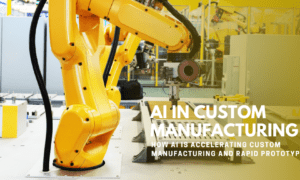Are you ready to dive into the captivating world of financial auditing in the digital age? Brace yourselves for a riveting exploration, as we unravel the future trends that are reshaping this critical industry. From cutting-edge technologies revolutionizing auditing processes to regulatory shifts shaping compliance protocols, join us on this exciting journey as we uncover what lies ahead for financial auditors in our rapidly evolving digital landscape. Get ready to witness firsthand how innovation and technology fuse together to create a realm where accuracy, efficiency, and transparency drive the audits of tomorrow. Let’s embark on this compelling quest together.
Introduction to Financial Auditing
Auditing is an essential practice in the modern world of finance and accounting. Its purpose is to ensure the accuracy and legitimacy of financial statements and other financial reporting. Auditing also provides assurance to investors, creditors, and others that an organization’s financial statements are reliable.
With the rise of digital technology, auditing is evolving. Financial auditing now incorporates principles of compliance and risk management, data technology, and analytics. Auditors are increasingly relying on these methods for the efficient auditing of financial statements.
A financial audit typically involves testing and analyzing the evidence related to the financial statements of an organization to determine rate compliance with applicable laws, regulations, accounting standards, and other related guidelines. Auditors assess the quality of an organization’s internal control processes by utilizing techniques such as making inquiries, examining documents or records, observing processes in action, reviewing sample transactions, and reconciling accounts.
Auditors also provide opinions based on their findings regarding whether an organization’s financial statements are free from material misstatement due to fraud or errors. A qualified opinion from an auditor is considered a form of assurance provided by third-parties which adds credibility to any financial reporting.
Challenges and Opportunities in the Digital Age
Auditing is an important part of the financial world, and it is constantly evolving. With new technology, came new ways to audit. The digital age has brought many challenges and opportunities for those in the auditing profession.
One of the biggest challenges that auditors face in the digital age is keeping up with the ever-changing technology. As new software and applications are developed, auditors must learn how to use them in order to properly audit a company’s financial statements. Additionally, auditors must be aware of potential cyber threats and how to protect their clients’ data.
Despite the challenges, there are also many opportunities that come with auditing in the digital age. New technology has created new ways to collect and analyze data, which can help auditors detect fraud and errors more quickly. Additionally, online tools can make it easier for auditors to collaborate with colleagues and clients located around the globe.
The future of financial auditing is full of both challenges and opportunities. Those who enter this profession must be prepared to adapt to new technologies and trends in order to be successful.
Artificial Intelligence and Machine Learning Applications for Auditing
Artificial intelligence (AI) and machine learning are two of the most talked-about technologies in the accounting and auditing profession today. And it’s no wonder why – these cutting-edge technologies hold the promise of transforming the financial audit process, making it more efficient and effective.
In recent years, we’ve seen a growing number of AI and machine learning applications being developed for auditing. Here are just a few examples:
1. Automated data analysis: AI-powered tools can automate the analysis of financial data, freeing up audit staff to focus on other tasks.
2. Fraud detection: Machine learning algorithms can be used to detect patterns of fraud and anomalies in financial data.
3. Streamlined workflows: AI can be used to streamline auditing workflows by identifying inefficiencies and suggesting process improvements.
4. Enhanced decision-making: By providing best practices and recommendations based on data analytics, AI can help auditors make better decisions about where to focus their efforts.
5. Improved client communication: With AI-powered chatbots, clients can get answers to their questions quickly and easily, without needing to contact an auditor directly.
Automated Audit Tools – The Future of Auditing?
As we move into the digital age, financial auditing is evolving. In the past, audits were manual and time-consuming, often requiring days or weeks to complete. But with the advent of automated audit tools, audits can now be completed in a fraction of the time, and with greater accuracy.
Automated audit tools use data analytics to identify patterns and trends that may indicate fraud or errors. They can also flag potential areas of improvement in financial processes. This allows auditors to focus their attention on these areas and reduces the risk of overlooking any potential problems.
The use of automated audit tools is not without its challenges, however. One challenge is ensuring that the data used for analysis is accurate and complete. Additionally, automated audit tools can produce a large volume of data that can be difficult to interpret. But despite these challenges, automated audit tools are becoming increasingly popular and are expected to play a major role in financial auditing in the years to come.
Regulatory Changes and Impact on Financial Audit Practices
The Sarbanes-Oxley Act of 2002 (SOX) was a major driver of change in financial auditing practices in the United States. The act introduced new rules and regulations designed to improve corporate governance and accountability in the wake of accounting scandals at Enron and WorldCom.
In response to SOX, public companies were required to establish internal controls over financial reporting and disclose any material weaknesses in those controls. Auditors were tasked with assessing the effectiveness of these controls and providing an opinion on whether they were adequate.
The implementation of SOX led to significant changes in financial auditing practices. For example, audit firms began to focus more on risk management and internal control testing. They also increased their use of analytical tools and data mining techniques to detect fraud and errors.
The Dodd-Frank Wall Street Reform and Consumer Protection Act ( Dodd-Frank) was another groundbreaking piece of legislation that impacted financial auditing practices. Dodd-Frank introduced new rules governing the auditing of public companies, investment advisers, and broker-dealers. It also created a new public company accounting oversight board, known as the PCAOB.
Dodd-Frank significantly increased the scope and complexity of financial audits. As a result, audit firms had to invest more resources in training their staff and developing new audit procedures. They also had to deal with increased regulatory scrutiny from the PCAOB.
The enactment of SOX and Dodd-Frank has led to a number of changes in financial auditing practices, including greater emphasis on fraud detection, improved internal controls, and increased regulatory oversight. These changes have resulted in more reliable and accurate financial information for investors and other stakeholders.
Potential Impact of Cloud Computing & Big Data on Auditing
As the world moves increasingly towards digitalization, organizations are sitting on huge data sets which their traditional systems struggle to handle. Cloud computing and big data offer new ways to manage and make use of this data. For auditors, this means being able to access real-time data which can provide greater insights into an organization’s financial health.
In particular, cloud computing can help auditors be more efficient in their work. For example, by using cloud-based audit tools, they can reduce the time spent on repetitive tasks such as data entry. In addition, cloud-based systems allow for easier collaboration between audit teams spread across different locations.
Big data also has the potential to transform auditing. By harnessing the power of big data analytics, auditors can gain a deeper understanding of an organization’s financial activities. This allows them to identify potential risks and areas of improvement more quickly and effectively.
Cloud computing and big data offer a range of benefits for financial auditing. By making use of these technologies, organizations can improve the efficiency and quality of their audits, providing greater insights into their financial health.
Conclusion
As the financial auditing landscape continues to evolve, understanding the future trends that are emerging is essential for success. Financial auditors must stay up-to-date with a wide array of regulatory and technological changes in order to provide accurate audits and insightful recommendations. The new digital age will bring more opportunities for automation, analytics, artificial intelligence, and data visualization which can drastically improve audit performance and enable financial audit teams to make faster decisions based on better insight into their clients’ finances. It is imperative that organizations take advantage of these advancements early so they can remain competitive as operators in this new digital age economy.



































